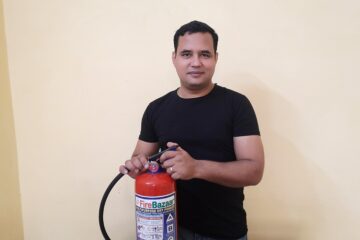
What are Smoke Detectors?
In today’s fast-paced world, ensuring the safety of our homes and loved ones is of utmost importance. One critical aspect of home safety is the installation and maintenance of smoke detectors. These devices play a vital role in safeguarding lives and properties by detecting the presence of smoke and alerting occupants to potential fire hazards. In this comprehensive guide, we will explore the different types of smoke detectors, their applicability in various settings, and essential maintenance practices to ensure their effectiveness.
1. Introduction to Smoke Detectors
Smoke detectors are electronic devices designed to detect the presence of smoke particles in the air. They consist of sensors that respond to the combustion byproducts produced during a fire. When smoke particles enter the detector, it triggers an alarm, providing occupants with early warning and valuable time to evacuate the premises or take appropriate actions to mitigate the fire’s impact.
2. Types of Smoke Detectors
There are primarily two types of smoke detectors commonly used: ionization smoke detectors and photoelectric smoke detectors.
2.1 Ionization Smoke Detectors
Ionization smoke detectors use a small amount of radioactive material to ionize the air inside the device. When smoke enters the chamber, it disrupts the ionization process, triggering the alarm. These detectors are highly responsive to flaming fires and are suitable for areas where fast-flaming fires are likely to occur, such as kitchens.
2.2 Photoelectric Smoke Detectors
Photoelectric smoke detectors operate based on the principle of light scattering. They employ a light source and a photosensitive sensor. When smoke enters the chamber, it scatters the light, causing it to be detected by the sensor, thus triggering the alarm. Photoelectric smoke detectors are particularly effective in detecting smoldering fires and are recommended for areas where slow-burning, smoky fires may arise, like living rooms and bedrooms.
3. Applicability of Smoke Detectors
Smoke detectors are crucial safety devices that should be installed in various settings to maximize their effectiveness. Here are some key areas where smoke detectors are highly recommended:
3.1 Residential Buildings
Every residential property should have smoke detectors installed. They provide early warning to residents, enabling them to evacuate promptly and contact emergency services in the event of a fire. It is advisable to install smoke detectors in bedrooms, hallways, living rooms, and kitchens for comprehensive coverage.
3.2 Commercial Buildings
Commercial buildings, including offices, hotels, and shopping centers, should be equipped with smoke detectors. Large establishments may require a network of interconnected smoke detectors to ensure efficient monitoring and rapid response in case of fire emergencies.
3.3 Industrial Settings
Industrial facilities, factories, and warehouses often present unique fire hazards due to the presence of flammable materials and complex operational processes. Installing smoke detectors in strategic locations, such as storage areas, production floors, and control rooms, is vital for early fire detection and prevention.
3.4 Public Spaces
Public spaces, such as schools, hospitals, and entertainment venues, should prioritize the installation of smoke detectors. These areas experience high foot traffic, making early fire detection essential for timely evacuation and minimizing potential casualties.
4. Maintenance of Smoke Detectors
Ensuring the proper functioning of smoke detectors requires regular maintenance and adherence to best practices. Here are some essential tips for maintaining smoke detectors:
4.1 Regular Testing
Perform regular testing of your smoke detectors to verify their operational status. Most smoke detectors have a dedicated
“Test” button that allows you to simulate a smoke condition and check if the alarm sounds. It is recommended to test the detectors at least once a month.
4.2 Battery Replacement
Replace the batteries in your smoke detectors at least once a year, or as per the manufacturer’s guidelines. Low battery power can compromise the effectiveness of the detector, so it is crucial to keep them powered adequately.
4.3 Cleaning and Dusting
Periodically clean your smoke detectors to remove dust, debris, and cobwebs that might obstruct their sensors. Use a soft brush or vacuum cleaner to gently clean the exterior surface, ensuring unimpeded airflow.
4.4 Regular Inspections
Conduct routine inspections to ensure the detectors are free from damage or tampering. Check for any loose wiring, loose mounting brackets, or signs of wear and tear. Promptly replace any faulty detectors to maintain the overall effectiveness of your smoke detection system.
5. Conclusion
Smoke detectors are indispensable devices that significantly enhance the safety of homes, commercial establishments, and public spaces. By understanding the different types of smoke detectors, their applicability in various settings, and the importance of regular maintenance, you can ensure their optimal performance. Stay proactive in protecting your loved ones and property by installing and maintaining smoke detectors, as they are a vital investment in fire safety.
Remember, safeguarding against fire emergencies requires a multi-faceted approach, including fire prevention, emergency planning, and the installation of appropriate fire safety equipment. Stay vigilant, stay informed, and prioritize fire safety in your surroundings.
References
I
